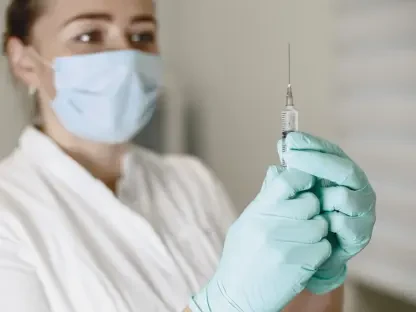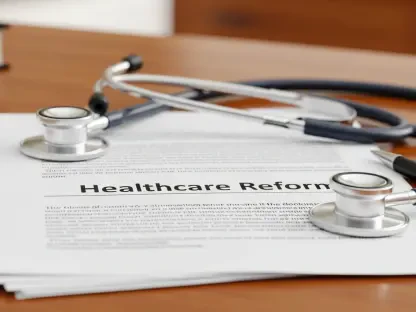Today, we’re diving into the critical issue of medical debt and wage garnishment with Faisal Zain, a healthcare expert with deep expertise in medical technology. With a background in the manufacturing of diagnostic and treatment devices, Faisal brings a unique perspective on the intersection of healthcare costs and consumer financial protections. In this conversation, we explore the devastating impact of medical debt on everyday workers, the gaps in protective laws, the role of hospitals and debt collectors, and potential solutions to alleviate this growing crisis. Join us as we unpack these pressing challenges and seek insights into how patients can navigate this complex landscape.
How does medical debt disproportionately affect low-income workers, and what are the real-life consequences you’ve observed or studied?
I’ve seen firsthand through various studies and reports how medical debt hits low-income workers the hardest. These are folks often living paycheck to paycheck, and a single emergency room visit can spiral into a financial disaster. For instance, when wages are garnished—sometimes up to 20% of their disposable income—it’s not just a number on paper. It means choosing between buying groceries or paying the electric bill. I’ve come across cases where people have had utilities shut off, forcing them to borrow money just to get by. Beyond the immediate financial strain, the stress and shame can take a toll on mental health, making it even harder to work and recover.
What do you see as the primary reasons medical debt leads to wage garnishment, even for those with insurance like Medicaid?
One major issue is the complexity and error-prone nature of medical billing. Even with insurance like Medicaid, bills can slip through the cracks due to administrative errors or miscommunication between providers and insurers. Patients often don’t realize they’re being billed incorrectly until it’s too late, and by then, debt collectors are involved. Additionally, many people aren’t aware of their rights or the processes to contest a bill. There’s also a systemic problem where providers and collectors pursue garnishment aggressively, sometimes even when coverage should have applied, because the path to filing lawsuits is often too easy and default judgments are common when patients don’t show up to court.
How effective are current state laws, like those in Colorado limiting garnishment amounts or wiping debt after a few years, in protecting consumers?
While laws in places like Colorado—such as capping monthly payments at 6% of income or erasing debt after three years—sound promising, they often fall short in practice. For one, enforcement and awareness are big issues. Many patients don’t know these protections exist or how to access them. Also, if someone doesn’t agree to a payment plan, they can still lose a significant chunk of their earnings to garnishment. These laws help some, but they don’t address the root causes, like preventing erroneous billing or ensuring hospitals offer charity care upfront. In my view, they’re more of a bandage than a cure, as the financial distress continues for many.
What role do hospitals and third-party debt collectors play in perpetuating the cycle of medical debt through wage garnishment?
Hospitals and debt collectors are often at the center of this issue. While hospitals provide essential care, some—especially nonprofit ones—pursue aggressive collection tactics, even garnishing wages of their own employees in certain cases. This is striking because they’re often required to offer community benefits like charity care, yet many don’t proactively inform patients of these options. Third-party debt collectors, who handle most of these lawsuits, profit by buying debt at a discount or earning a cut of what they recover. Their focus is on collection, not on whether the bill is accurate or fair, which leads to a system that prioritizes revenue over patient well-being.
Are there alternative approaches to handling medical debt that could prevent the need for wage garnishment altogether?
Absolutely, there are better ways. Some states have banned wage garnishment for medical debt entirely, and hospitals there still manage to operate. Another approach is mandating transparency in billing and requiring providers to screen for charity care eligibility before pursuing collections. Payment plans with reasonable terms, based on a patient’s actual ability to pay, could also be standardized. Additionally, creating accessible databases to confirm insurance coverage like Medicaid upfront would prevent wrongful billing. On a broader scale, policies that reduce healthcare costs or expand coverage could stop debt from piling up in the first place. It’s about shifting the focus from punishment to prevention.
How can patients be empowered to protect themselves from unfair medical debt practices, and who should take responsibility for educating them?
Empowering patients starts with education on their rights—knowing they can contest bills, request itemized statements, or apply for financial assistance. Hospitals and providers should bear the primary responsibility for this education, as they’re the first point of contact. They need to provide clear, upfront information about costs and assistance programs. Nonprofits and consumer advocacy groups can also play a big role by offering resources and legal support. Government agencies could step in with public campaigns or online tools to demystify the process. Ultimately, it’s a shared responsibility, but providers must lead by ensuring patients aren’t blindsided by bills they can’t pay.
What is your forecast for the future of medical debt and wage garnishment if current trends continue, and what changes do you hope to see?
If current trends hold, I’m concerned we’ll see an increase in medical debt and garnishment cases, especially as more people lose insurance coverage due to policy changes or expiring subsidies. The problem could deepen for millions, pushing more into financial ruin. My hope is for systemic reforms—stronger federal and state protections, bans on wage garnishment for medical debt, and a healthcare system that prioritizes affordability. I’d like to see technology used to streamline billing accuracy and insurance verification, reducing errors. Without significant action, though, the cycle of debt and distress will only worsen, and that’s a burden no patient should have to bear.









